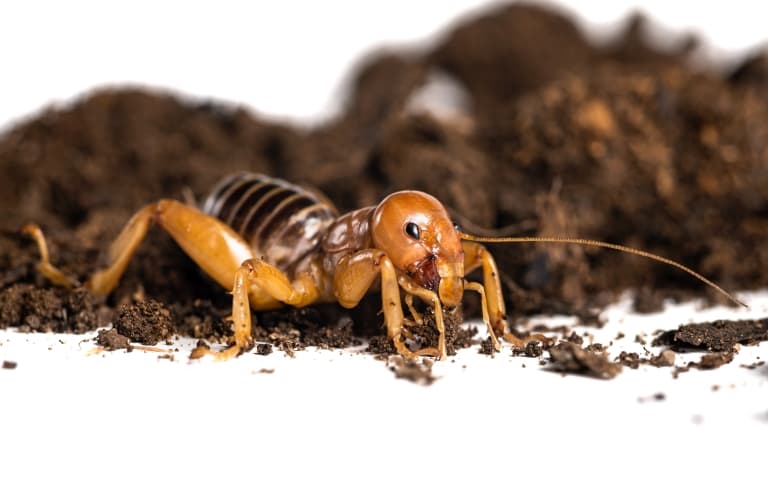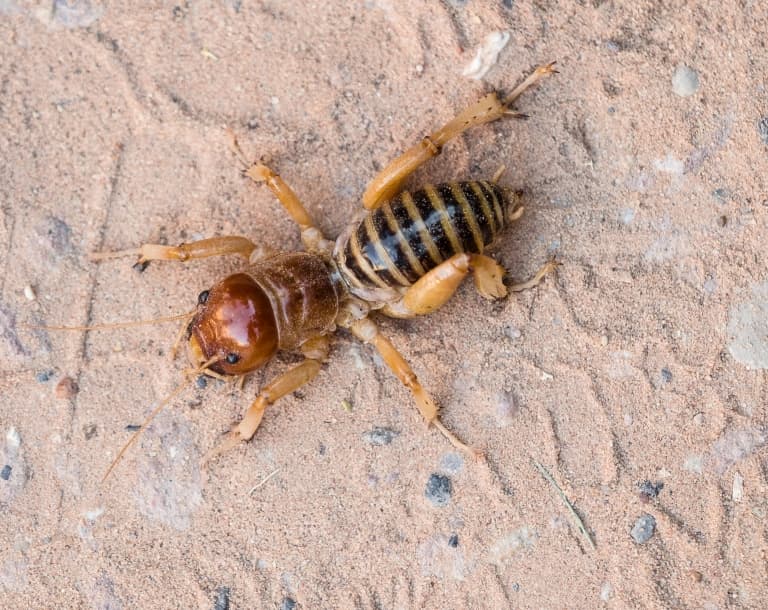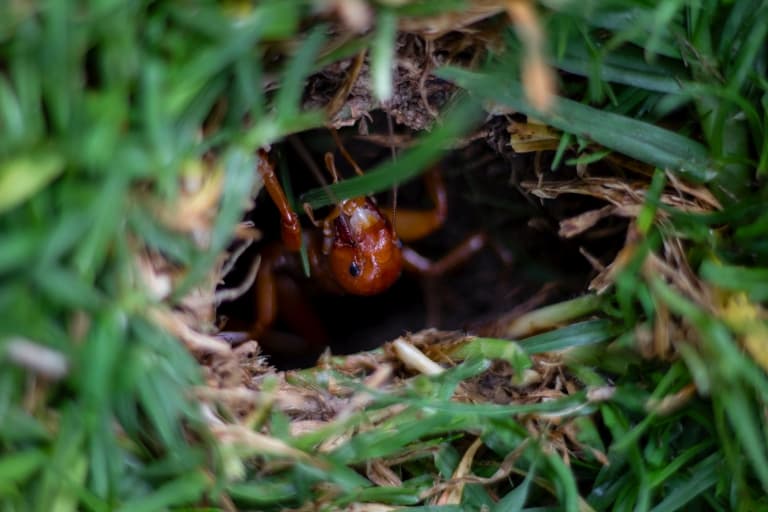Jerusalem Cricket Profile
In 1989, a damning exposé was published in United Press International, highlighting that one of the most famous insects in the world was, in fact, not what he seemed. May R. Berenbaum, a University of Illinois insect specialist, complained of Jiminy Cricket,
“From the entomological point of view, he’s not much of a cricket… He’s the wrong colour. The mouth is wrong. The eyes are wrong. He has the wrong number of legs”.
This is, of course, overlooking the more obvious clues such as the hat, the perfect English, and the fact that he was animated. Still, this level of forgery does exist outside of the artists’ studio and has made its way into the legends of multiple peoples of the Americas.
It’s time to blow the whistle on the Jerusalem cricket, which are neither true crickets or from Jerusalem. Jerusalem crickets are also known as ‘potato bugs’, and are a group of large, flightless insects native to the USA and Mexico.

Jerusalem Cricket Facts Overview
| Habitat: | From oak savannah, grassland, chaparral, coastal and inland sand dunes to above the tree line |
| Location: | North and Central America |
| Lifespan: | Up to 3 years |
| Size: | Up to 7.6cm (3 inches) long |
| Weight: | Up to 13g (0.5 oz) |
| Colour: | Orange/brown |
| Diet: | Dead organic matter, roots and tubers |
| Predators: | Foxes, skunks, bats, opossums, owls, rodents, vipers, and scorpions |
| Top Speed: | slow |
| No. of Species: | 39 to 42+ |
| Conservation Status: | Most are not listed, others are Vulnerable (IUCN) |
Jerusalem crickets are great big fibbers of the Orthopteran order, or at least those who named them are. But this doesn’t make them any less interesting; in fact, they have multiple quirks that true crickets don’t. And they’re arguably as famous as the Disney character in ancient circles.
These nocturnal insects can grow up to 3 inches in length and use their adapted feet with special spikes to burrow in the ground for food. They primarily feed on dead organic matter such as decaying roots and tubers, but can also eat other insects – both alive and dead.
From shaking the booty, to eating each other, there’s a lot to talk about when it comes to these powerful biters.
Interesting Jerusalem Cricket Facts
1. Jerusalem crickets are not crickets
While at first glance, they do look the part, these animals are not true crickets. And they’re in the same order, with the grasshoppers and true crickets, sharing the suborder with the latter.
But Jerusalem crickets are in a very different family than true crickets. This includes a bunch of flightless varieties, and some with wings, found in Africa.
The JCs are wingless and are found in the Americas.

2. They’re not from Jerusalem
The origins of the name aren’t certain, but it’s thought that it comes either as a reference to the skull-shaped head (they’re also known as skull crickets), which is associated with skull hill in Jerusalem; or, comes from a watered-down swear word from the ‘40s and ‘50s.
Around this time, in the US, both “Jerusalem” and “Cricket” were expletives, associated with being startled. 1
3. They can draw blood
And startle you should because when persistently disturbed, the Jerusalem cricket flips over onto its back and opens its powerful jaws. Their mandibles are large and these jaws are no joke; they can draw blood. And this position also allows the insect to give powerful kicks.
4. They can emit a foul odour
This intimidating display threatens genuine pain to anyone who ignores it, but as if that wasn’t clear enough, many taxa also produce some lovely anal discharge for an olfactory reminder not to feed on this animal.
5. They’re nimble
It’s said that Jerusalem crickets can jump up to 10cm, and they’re established climbers.
Some species spend most of their lives hunting in trees, while others burrow into root crops. In both cases, their feet are highly adapted for purpose with special spurs. They have flat heads to help buldoze through the moist soil. 2

6. They use their butt to communicate
Like true crickets, these insects communicate by sound. But having no wings or wing cases to rob on stuff, they use what God gave them and bang their round abdomens against the ground.
This percussive communication sends audible waves as far as 20 meters from the cricket, but they fall on deaf ears because the receiver has no organs to pick up on airborne vibrations.
Instead, they use a special organ in the legs that acts as a receiver of ground-based vibrations. Information on the age, sex, location and intentions of the insect can be transmitted this way. 3
7. Size matters to females
In Jerusalem crickets, females have better reproductive success with smaller males. Typically, males are either smaller or the same size as females, and this works out pretty well for them as a species, but interestingly, when larger males tried to mate with smaller females, only 50% of their efforts were successful.
There appears to be an advantage to being smaller in these animals, and researchers believe this might be a mechanical issue. The specific construction and alignment required for the copulation prefers a more petite presence in the male, and this is thought to have led to the sexual dimorphism that’s common in the family.
When they mate, they assume a unique position, where the male initiates by rolling onto his side. The female follows suit and then they copulate whilst facing opposite directions.
8. They’re cannibals
Hopefully, this goes well for the smaller male, as many species are known as cannibals. There’s no evidence to say that females routinely eat males, as is found in spiders and mantids, but nymphs certainly do violently compete with each other as predators. 4

9. They’re significant icons in some native traditions
In the Southwestern US, the native people known as the Hopi use various figures to teach girls and young women about their physical development, and various otherworldly beliefs relevant to the history of the people.
These figures represent spirits or other immortal beings that control the forces of nature and act as messengers between the physical and spiritual realms.
One of these figures is the Jerusalem cricket, whose true significance is hard to pinpoint, but seems to have changed over the years. Evidence suggests they represent fast runners or racers, the coming of which, both blesses people and encourages them to start the racing – a significant part of ceremonial events in the culture.
It’s said the loser will get thrashed by the cricket figure. But be careful not to return the attack, or you might lose your hair! 5
10. If you kill one, you’ll go bald
In some cultures, there is an erroneous belief that Jerusalem crickets are venomous. This is likely because their bite is so powerful it feels like they might be. But so far, no venomous species have been found.
Navajo remedies include a treatment for Jerusalem cricket envenomation, which involves, as many do, the Yucca plant. But they have a far more terrifying belief about this animal.
The Navajo also claim that these crickets have some level of control over male pattern baldness. Specifically, it’s said if you kill one, you can go bald.
The context isn’t clear, but it’s also said that the cricket can remove hair. This might have something to do with the baldness of the insect itself, and its shiny, little head.
Jerusalem Cricket Fact-File Summary
Scientific Classification
| Kingdom: | Animalia |
| Phylum: | Arthropoda |
| Class: | Insecta |
| Order: | Orthoptera |
| Suborder: | Ensifera |
| Family: | Stenopelmatidae |
| Subfamily: | Stenopelmatinae |
| Tribe: | Stenopelmatini |
Fact Sources & References
- “Jiminy Cricket”, Bug Guide.
- David B. Weissman, “Jerusalem Crickets (Orthoptera: Stenopelmatidae)”, Springer Link.
- Johannes Strauß (2017), “The scolopidial accessory organ in the Jerusalem cricket (Orthoptera: Stenopelmatidae)”, Science Direct.
- Dinorah A. Sánchez-Xolalpa (2017), “Morphometry, Behavior, and Ecology of the Jerusalem Cricket, Stenopelmatus talpa”, BioOne Digital Library.
- Stoffolano, J. G. (2005), “Sös´ ööpa—Jerusalem Cricket: ` An Important Insect in the Hopi Katsina Pantheon”, Sci Hub.
